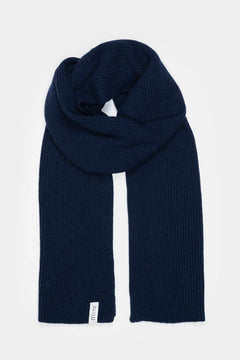With the launch of our first garments made from 100% recycled linen, we want to delve into the characteristics of this material, its production, and the benefits of choosing it.

The properties of linen and why choose recycled linen
- Linen: a sustainable crop
- Properties and characteristics of linen
- How to recycle and process linen
- Virgin linen vs recycled linen
- How to care for linen garments
- The recycled linen capsule
Linen: A Sustainable Crop
Linen is a material that has a low environmental impact. First of all, because the flax plant is CO2 positive, meaning it is among the plants that retain the most CO2, about 3.7 tons per hectare in a year. For comparison, one hectare of mixed forest retains about 7.74 tons per year.
Additionally, flax is a robust and resilient crop that minimizes the need for protective chemicals and fertilizers and requires much less water compared to cotton.

It is said that flax plantations can survive solely on rainwater. This obviously depends on the regions where they are grown. Today, flax cultivation is very common in northern Europe: in northern France and Belgium, where abundant rainfall facilitates its growth. Although it has become quite rare today, flax cultivation was widely practiced in Italy in the 1900s due to the ease of cultivation and the resilience of this noble fiber.
Properties and Characteristics of Linen
The characteristics of linen make it a valuable material, particularly comfortable especially in summer. Here are the main properties of linen:
- Breathable
- Lightweight
- Soft on the skin
- Hygroscopic, meaning it absorbs a lot of water from the skin and releases it outside, allowing sweat to evaporate.
How to Recycle and Process Linen
The linen recycling process involves transforming industrial textile waste from virgin yarn production into a new recycled yarn. These production scraps would otherwise be disposed of and destroyed, but this way they further optimize the advantages of linen.

Since the source of this recycled material is not old used linen garments, the recycled linen is referred to as preconsumer. While 70%-80% of global flax cultivation takes place in Europe, its transformation into yarn mainly occurs in China. Alongside production, the waste from this process is also located in this country. For this reason, we chose a yarn with this origin, which allowed us to expand our range of circular garments, created by transforming waste into new resources.
Recycled linen has a very interesting characteristic. The long fibers of the virgin yarn are shortened during this process, making the new yarn much softer to the touch, perfect for creating knitwear with a loose appearance that drapes well and offers a refined style in its simplicity.

Additionally, when used in knitwear, linen is not prone to the well-known creases that so easily form on linen fabric for pants or shirts, for example.
Virgin Linen vs. Recycled Linen
If linen already represents a crop that requires very little water and few fertilizers, the reduced impacts of this material when recycled are truly astonishing.

Looking at the data produced by the partner BCome's study, our recycled linen T-shirts save 100% of the chemicals compared to a virgin garment. No polluting substances end up in the wastewater and consequently in the sea. In short, the recycling process of linen generates a lower impact in terms of eutrophication - pollution caused by the proliferation of algae in an ecosystem due to excessive release of phosphates and nitrates - compared to the impact that would result from the disposal of a virgin linen garment.
Regarding water and CO2 emissions, each of these T-shirts has required only 13 bottles of water and the equivalent in CO2 of 7 km driven by a car.
How to Care for Linen Garments
It is important to note that linen is subject to a slight amount of shrinkage, so it is advisable to wash at low temperatures, if using a washing machine, at 30°.
For knitwear, it is always better to dry flat to avoid stretching.
As for ironing, special care should be taken with knitted garments. In particular, near the seams, it is better to steam and not apply the iron directly, as these areas are prone to taking on an unsightly shiny appearance.
The Recycled Linen Capsule Collection
We have chosen a 100% recycled linen yarn, certified GRS (Global Recycled Standard) for our lightweight knit t-shirts. The pure composition of these garments makes them recyclable again, biodegradable, and highly comfortable for the summer season.












1 comment
Approvo la vostra condotta etica nei confronti di una politica ambientalista ed ecologica che valute scelte alternative a quelle del profitto facile..Bravi
———
Rifò – Circular Fashion made in Italy replied:
Grazie Francesca💚
Il giorno mer 31 lug 2024 alle ore 19:41 <Sunny@comment.sunnysideapps.com> ha scritto:
>
Leave a comment